

 Photography by John Jackson
Photography by John Jacksonhe Model 48 was a harbinger of things to come and in 1935 Ford would once again outsell Chevrolet with 820,000 units. No wonder, as the 1935 Ford five-window coupe was a thorough redo from earlier years and Ford’s reputation for value, sensibleness, and appearance turned out to be a winning combination. The 1935 Ford five-window, and other models that year, was offered in a standard and DeLuxe trim. The grille featured a “forward-appearing” look while the fenders became more cohesive with the body, causing them to “stick out” less. This design reflected the design influences of the day.
Originally, the 1935 Ford five-window coupe came with a 221-inch Flathead V-8 (only available motor of the day) but in today’s trim there’s much more resting under the hood. The always-popular LS has taken up residence between the forward ’rails. It’s an LS3 (6.2L) coming in at 376 ci, topped with a pair of Billet Specialties valve covers, a Vintage Air Front Runner serpentine belt system, and Speedway Motors Tru-Ram chrome exhaust manifolds (dumping into a 2-1/2-inch stainless steel exhaust pipe run back to a pair of mufflers that then exit beneath the rear of the running boards). But the real “eye candy” is the impressive Inglese 8-Stack EFI resting on top of the V-8 pushing this motor into the 500-plus horsepower range. Bringing this potent engine to life is a Performance Systems Integration (PSI) controller kit connected through an American Autowire Highway 22 Plus wiring system. The initial “spark” is provided by the trunk-mounted Optima battery while all of this is ready to respond through the Lokar drive-by-wire throttle system. Speaking of the throttle, the gas is brought forth from a stainless steel replacement tank through a Walbro electric fuel pump.
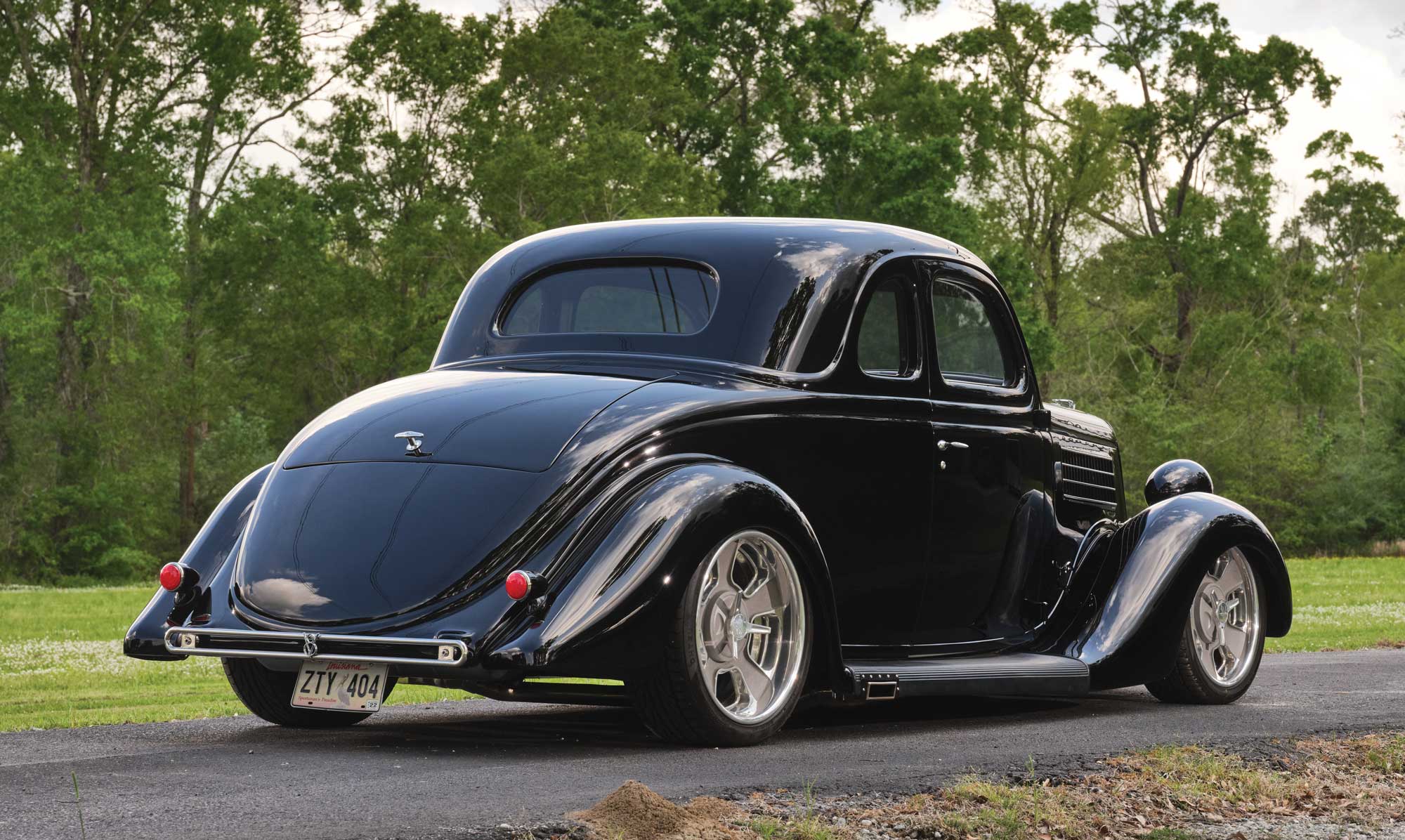
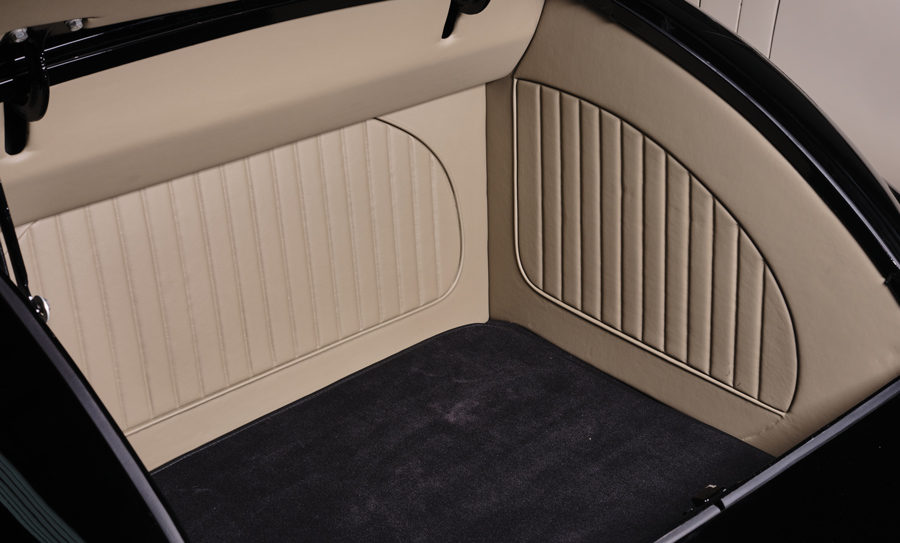
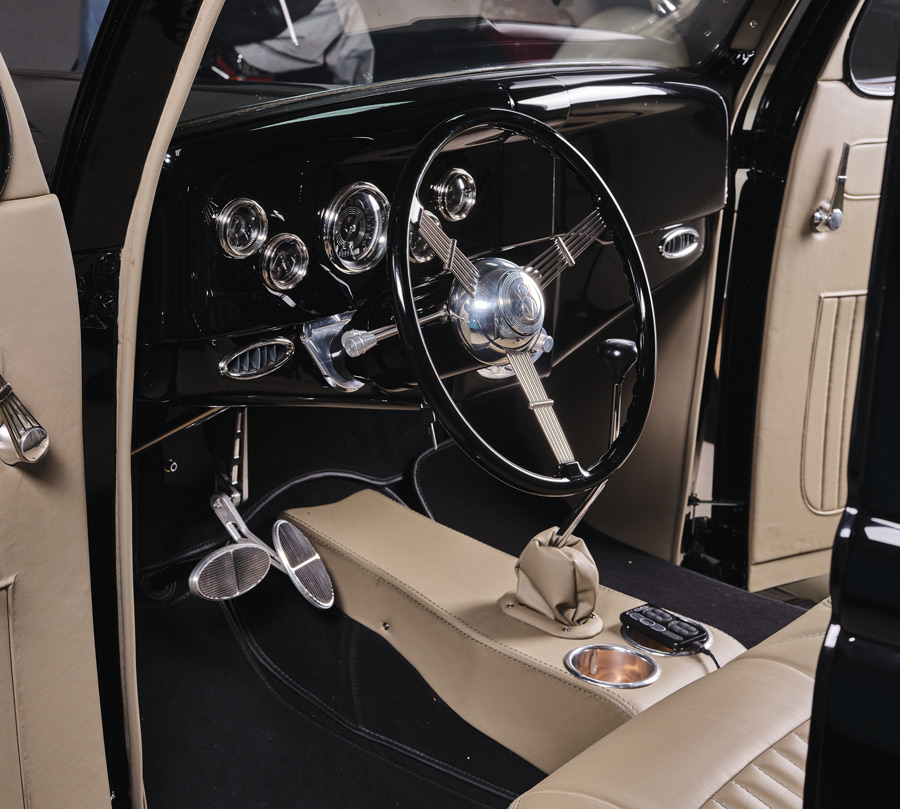
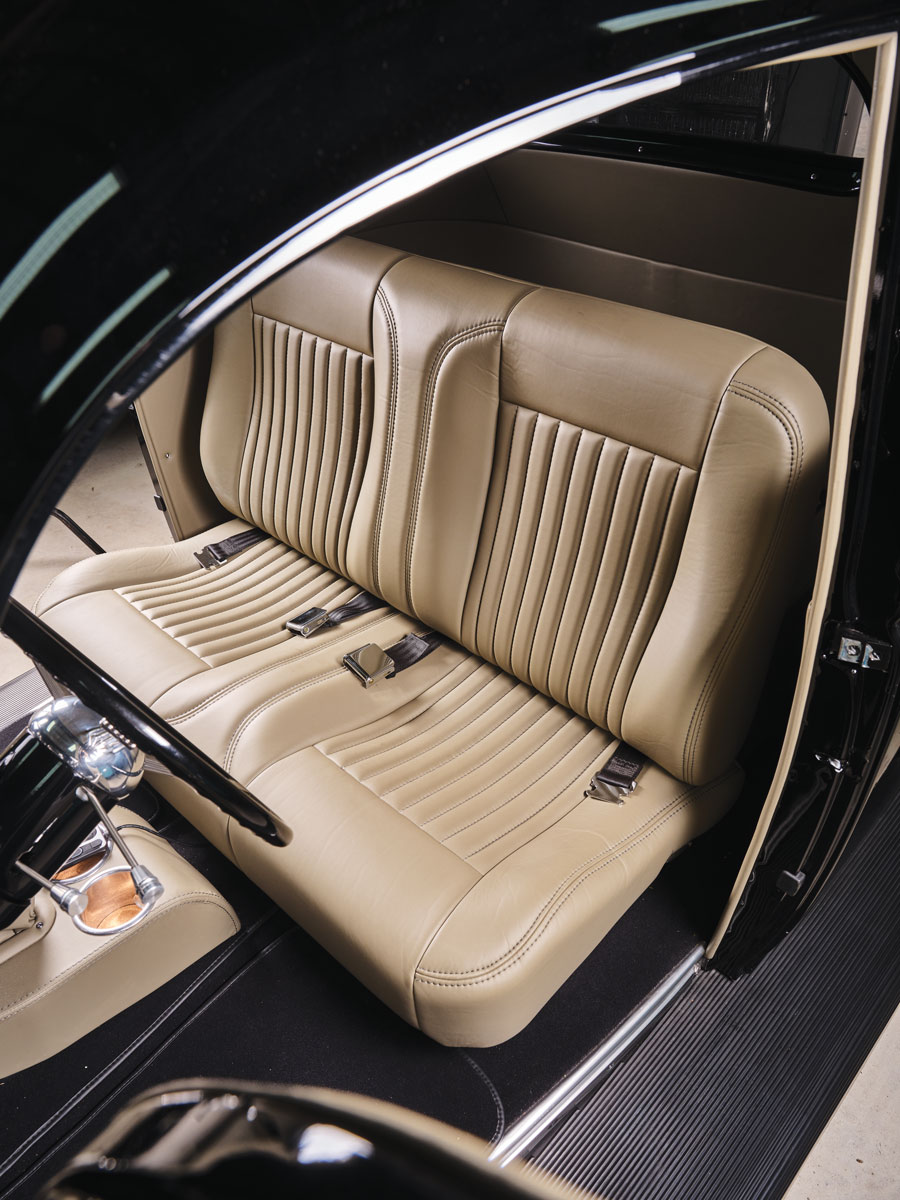
Neighbor to Popeye’s is Shawn Broussard of Shawn’s Paint and Body who handled the body- and paintwork. Once the meticulous metalwork was conducted, the PPG DBC black paint was applied. It doesn’t take much to have the brightwork pop against a flawlessly prepped black hot rod. With the stainless trim and chrome applied, the nod was given to McMillan Rod & Custom for the front and rear nerf (or chin) bars that were positioned by Popeye’s.
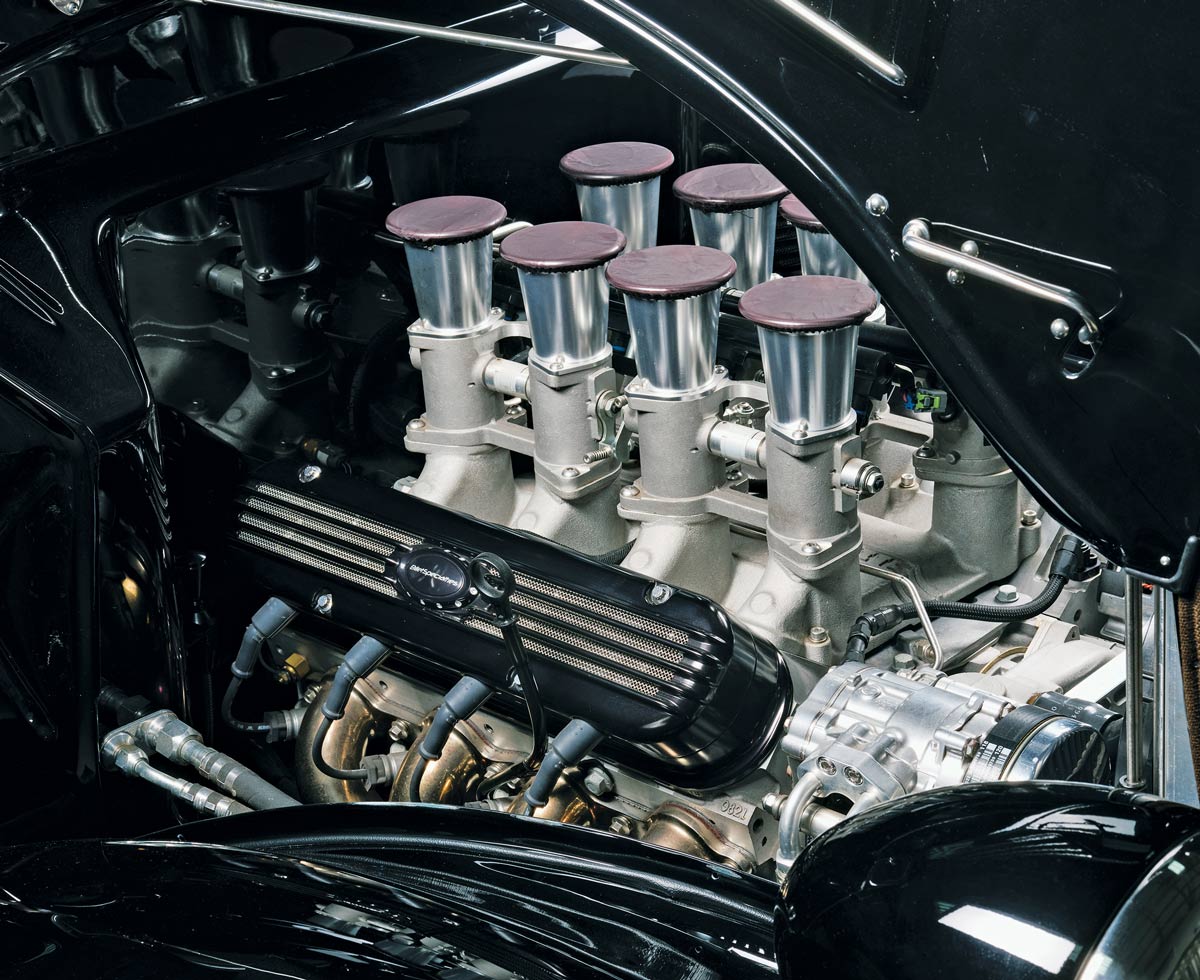
It’s taken some time for the 1935 and 1936 Ford to be revered as thoroughly as the 1933 and 1934 or the 1937-1940. Times have changed, and the 1935 Ford shown here is as good looking as any when it comes to street rod material.